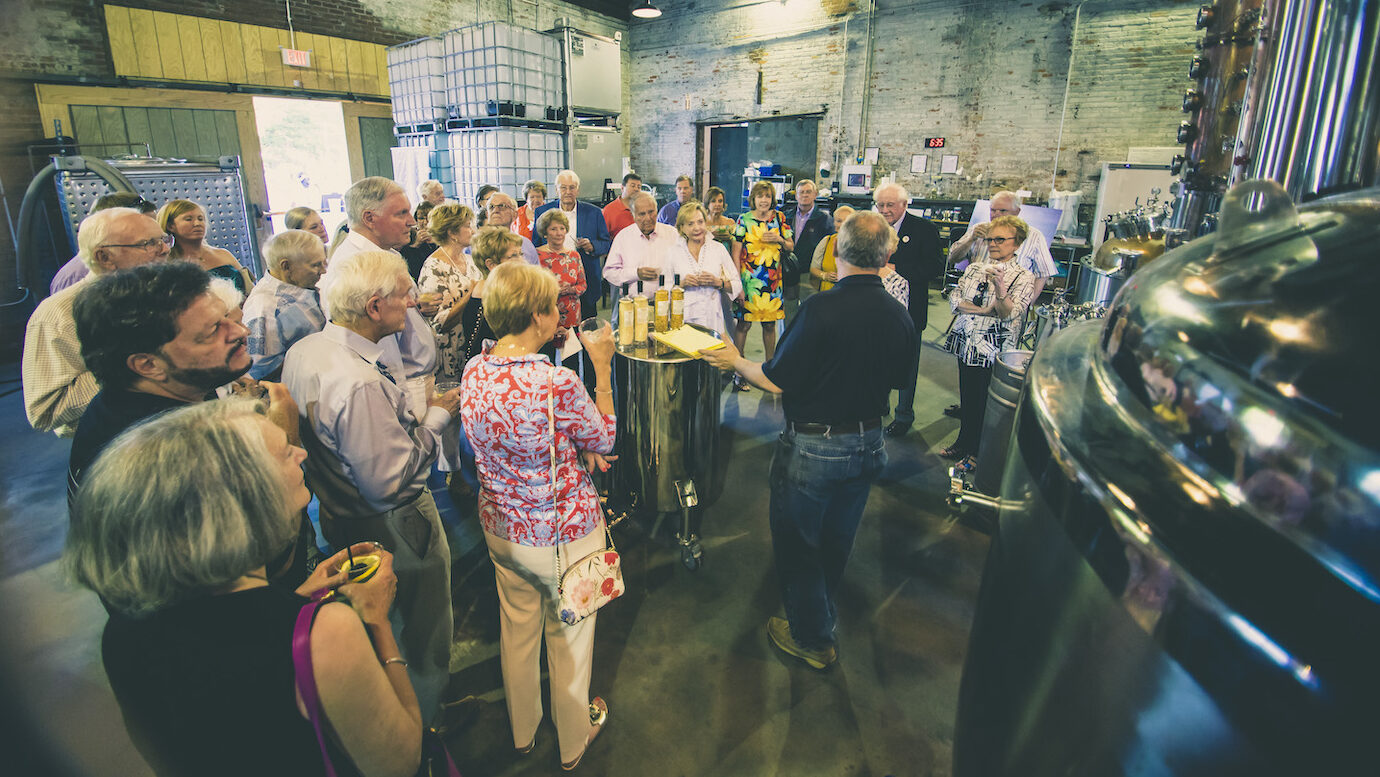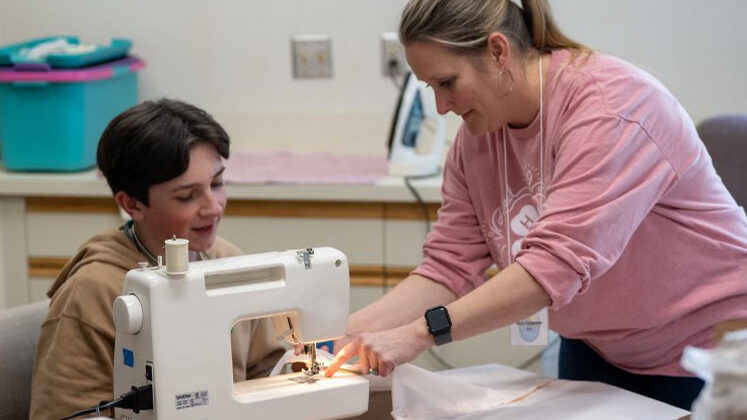Localizing Luxury
When you think about North Carolina farm attractions, strawberries, sweetpotatoes and Christmas trees may come to mind—but what about caviar?
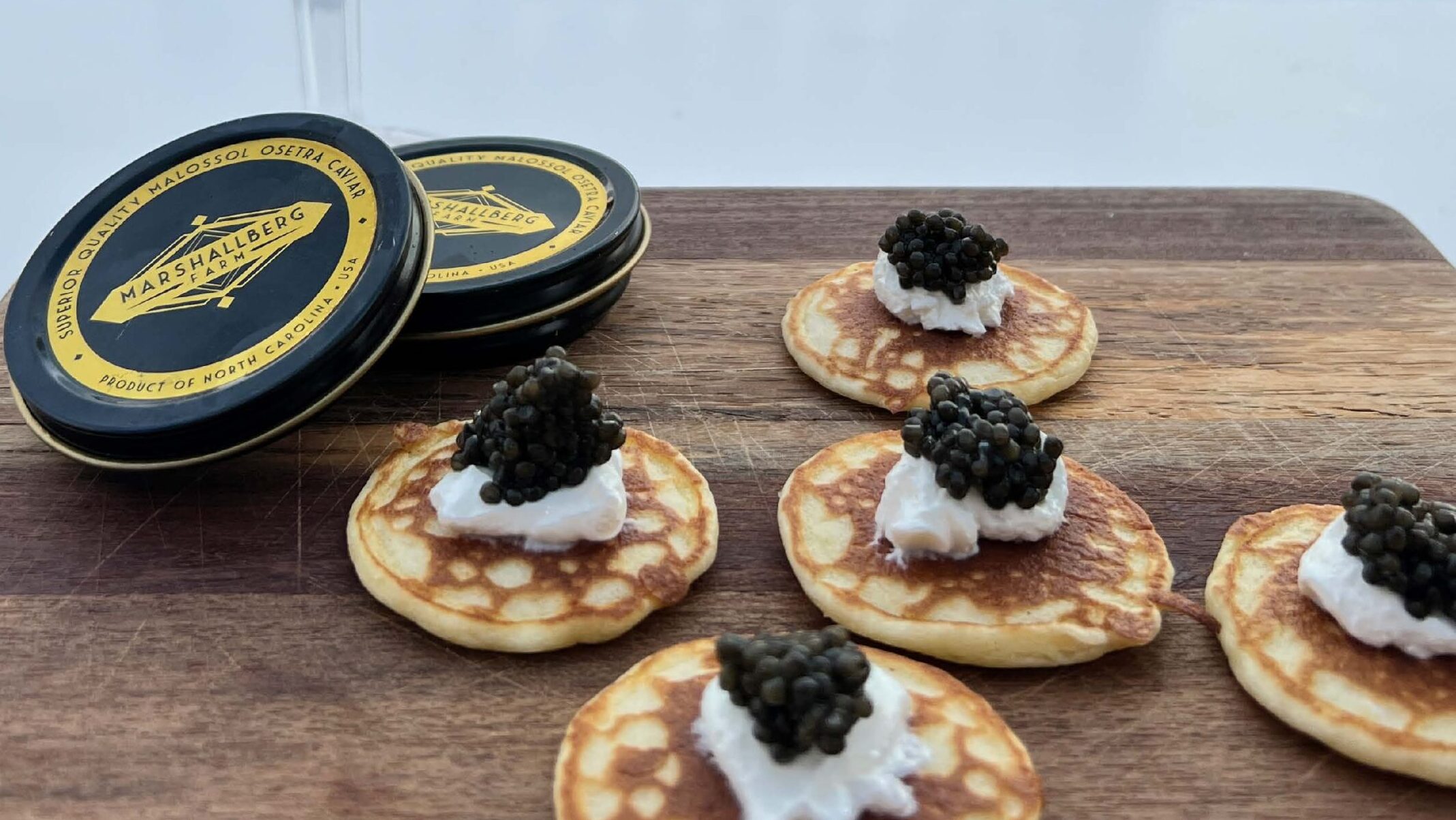
Family-owned and -operated Marshallberg Farm, with a state-of-the-art recirculating aquaculture system (RAS), is opening its doors to agritourism in the hopes of educating the public about sustainable aquaculture and their specialty: coveted Osetra caviar.
The Making of a Fish Farm
Marshallberg Farm started in 2008 and has since become the largest indoor RAS sturgeon farm in the United States. With two farms, they have four grow-out buildings to raise Russian sturgeon (Acipenser gueldenstaedtii) in addition to processing facilities. Marshallberg Farm is committed to sustainably producing caviar and meat to help reduce overfishing and facilitate wild sturgeon conservation. With a profit some 13 years in the making, Marshallberg Farm is the largest producer of Osetra caviar in North America.
Marshallberg Farm is the passion project of retired NC State professor of geophysics I.J. Won, Ph.D. Owner of a 300-acre coastal farm in Smyrna, North Carolina, and another similar-sized facility in Lenoir, North Carolina, Won built his Smyrna commercial-scale aquaculture farm in 2010—a $10 million investment.

“When my dad started the farm, he wanted to create a venture of sustainable aquaculture. RAS is the only truly sustainable technology in aquaculture,” explains Won’s daughter and business partner, Lianne Won-Reburn. “It’s as much a water treatment plant as it is a farm. It just happens to have fish in it.”
Won-Reburn’s husband Brian Reburn, a water treatment professional, oversees the feeding and care of the sturgeon and day-to-day operations at the fish barn, ensuring the delicate balance of the RAS. With over 30,000 fish—the females are worth nearly $5,000 each—and a long maturation process, it’s a big job.
With aquaculture, success depends on water quality control. The RAS recycles a million gallons every hour through a series of filtration systems before it goes back into the tanks.
“Ninety-five percent of our water is filtered and reused,” Won says. “The little bit of effluent, or liquid waste, that we produce we give to local farmers and gardeners to use as fertilizer.”
Our goal is to produce seafood in the U.S. in a sustainable way.
Marshallberg Farm hopes to work closely with researchers at NC State’s Marine Aquaculture Research Center (MARC), hosted on a 6-acre plot of Won’s farm, on further research and development of sturgeon aquaculture in North Carolina. MARC is led by Steven Hall, a professor in the Department of Biological and Agricultural Engineering, and William White Jr., Sturgeon Aquaculture Distinguished Professor in Biological and Agricultural Engineering. Alex Chouljenko, assistant professor and director of the seafood technology program at NC State’s Center for Marine Sciences and Technology (CMAST), is also involved with the farm.
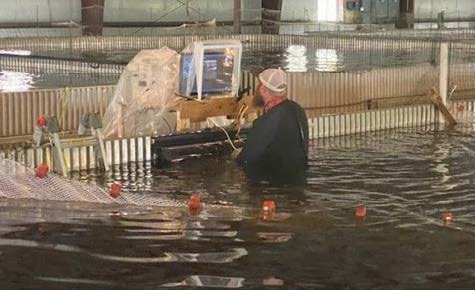
Marshallberg Farm works with CMAST to test samples of the caviar, and Chouljenko is working to develop a DNA test for the sturgeon to help determine the sex of the fish before their sex organs mature at around age 5.
The crew currently determine the sex by performing an ultrasound on each fish, after which the males and females are moved into separate tanks. The males are harvested for sturgeon meat, which is smoked on site. After 7 to 10 years of maturation, female sturgeon produce 80,000 to 100,000 eggs that are harvested as roe.
The Cost and Reward
Wild Caspian sturgeon are among the most endangered species on Earth. According to the World Wildlife Fund, their scarcity is due to overfishing, loss of habitat and an illegal caviar trade. Aquaculture is an important component in conserving sturgeon and the only way to sustainably produce Osetra caviar. Conservation and sustainable fish farming are pillars of Marshallberg Farm. The practices come with a healthy price tag but a huge potential reward.
Marshallberg Farm enforces strict food safety and environmental regulations at their aquaculture facilities and feeds the fish a high-quality diet designed just for them. “You have to be patient and have enough resources to keep feeding the fish and keep the aquaculture system running,” Won-Reburn explains. Ranging from $65-$180 per 1-ounce tin of caviar, the delicacy is expensive and in demand by chefs and foodies. The niche product has the potential to create a financial boon for Marshallberg Farm and prove sustainable aquaculture as a business model for farmers.
“Raising sturgeon for caviar makes economic sense for an RAS farm,” Won says. “The U.S. imports over 90% of our seafood from companies and farms that wouldn’t pass USDA or FDA regulations, or they’re not following sustainable fishing practices and destroying the ecosystems in the oceans and rivers. So our goal is to produce seafood in the U.S. in a sustainable way. Caviar is the place to start from the top down because it can sustain the high cost to run a sustainable RAS farm.”
That sustainability model is also popular with informed consumers. Marshallberg Farm hopes to raise different species in the future as the technology and their profits improve.
Demand for Agritourism
Once word got out that Marshallberg Farm was raising Caspian sturgeon on an aquaculture farm in eastern North Carolina, an influx of interested people wanted to see how.
“We get a little boost in sales from agritourism, but we’re not doing it for the money,” Won-Reburn says. “We’re doing it because people call all the time wanting tours. And it’s been interesting seeing the connections we’ve made that have helped our business.”
Agritourism helps customers connect with the farm on a deeper level. The experience includes an in-depth tour of the RAS Osetra sturgeon farm, caviar tasting with champagne and vodka, sampling of smoked sturgeon products and the opportunity to purchase Marshallberg Farm products.
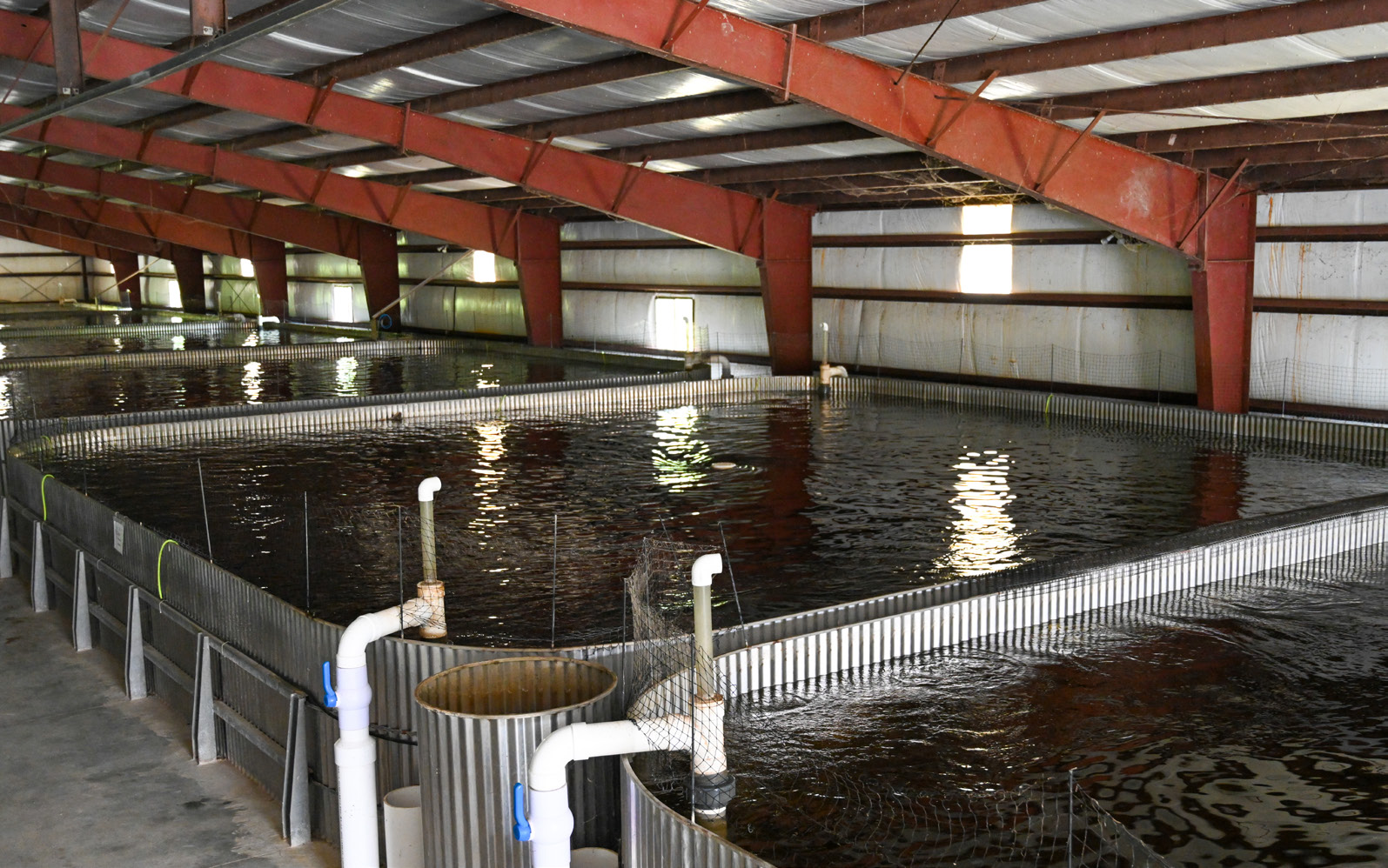
“Visitors get to see what we do and they remember it. They experience it,” Won-Reburn says. “That kind of grassroots marketing, where they have a great experience and can tell their story, helps our reputation. It’s good for the soul of our company.”
About two dozen restaurants on the East Coast have Marshallberg Farm caviar on their menus regularly or for special occasions. Direct sales are starting to pick up, and Won-Reburn enjoys hosting tour groups from nearby Beaufort and other towns on the Crystal Coast. She hopes to see the farm turn a larger profit so they can expand the agritourism business and continue to grow their sustainable aquaculture farming.
As for her father, “He’s still going strong,” Won-Reburn says. “There’s always some vision he’s working toward.”
- Categories:
